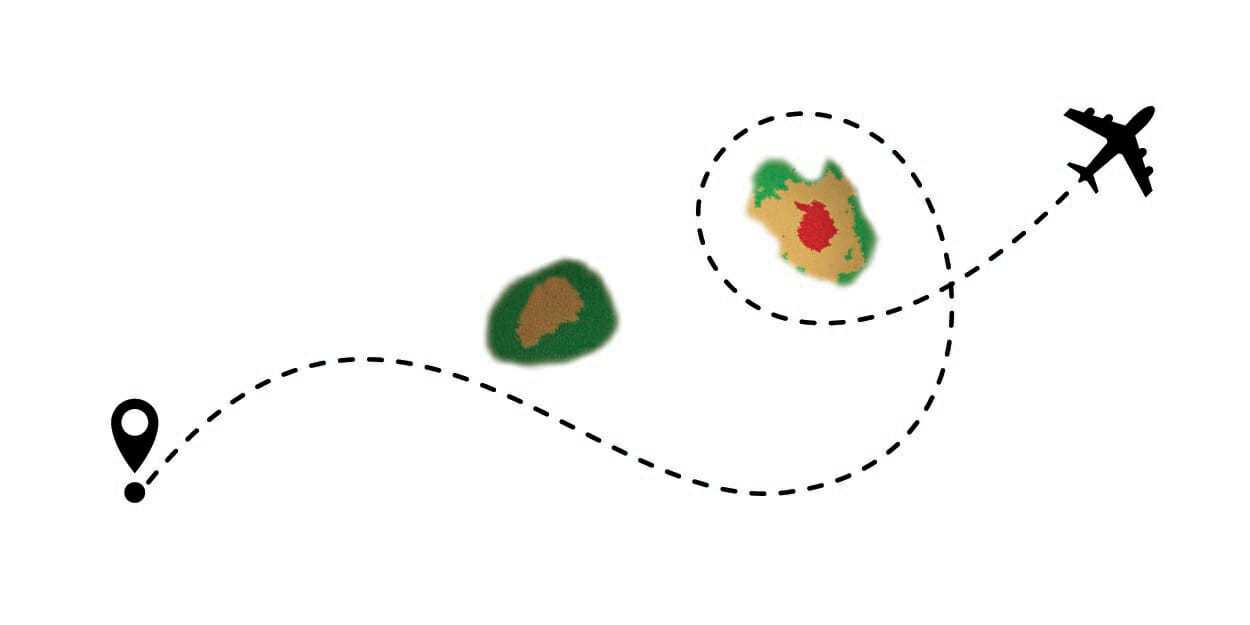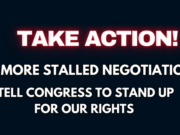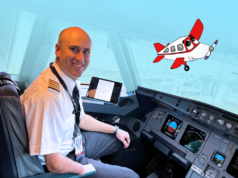
One of the things that has surprised me about Part 121 flying versus Air Force flying is how often we “push” the weather. The inside joke in the industry goes something like this: The first officer asks the captain, “Have you had a chance to look over the destination weather yet?” To which the captain replies, “It doesn’t matter, we’re going.” That joke is not too far from the truth. Flight planning in the airlines is designed to provide multiple contingency options as the impact to the safety of a flight increase owed to the likelihood of various threats.
During the spring and summer in the normal course of doing our job, we often find ourselves picking our way between thunderstorms in the terminal environment. However, we don’t just kick the tires and light the fires with a carefree, “come what may” attitude. Instead, we mitigate the risks through several layers of safeguards to ensure we don’t take unnecessary risks that could compromise safety.
For instance, we have regulations that require filing an alternate if adverse weather is forecast at the destination. We have the option to add additional “contingency” fuel for holding or diverting if we think that may be needed. We have radar to see the weather picture hundreds of miles out in front of us and multiple ways to get real-time information about enroute, destination, and alternate airport weather in case we need to divert. In other words, we hope for the best, but we plan for the worst, always leaving ourselves a way out so that we have multiple options along the way (e.g. hold, divert, go-around, etc.).
Planning an airline pilot career is much like the scenario described above. If history is an indicator (and it should be), every airline pilot will likely see turbulent times if they stick around long enough. The airline industry typically operates on razor thin margins. Shocks to the economy always have adverse affects on the airline industry wherein recovery can take many years to depending on how severe the shock wave. In the past 20 years, the airlines have seen three major downturns. The first was in the wake of the September 11, 2001 terrorist attacks. Many airlines furloughed 20% or more of their pilot force due to a sharp drop in demand after 9/11. The second occurred during the 2008 recession brought on by the financial collapse of the U.S. mortgage and banking industries. The great recession also caused deep furloughs at most major airlines in addition to a wave of consolidations as a number of many major airlines declared bankruptcy. And, airlines bought by other airlines.

We are currently living through the third industry downturn of the past twenty years – a global pandemic. This is without a doubt, the most severe downturn to hit the airline industry in the history of the airline business. In late March through early April of 2020, passenger demand dropped over 90% from the previous year as state and federal governments imposed shelter-in-place orders and travel bans. Passenger demand showed slow but steady signs of recovery during May and June this year but as this coronavirus makes a resurgence, bookings into late summer and fall are once again showing signs of weak demand, reversing the gains of the previous months.

Knowing what scenarios could play out during an industry downturn helps you develop a plan to weather the storm. The worst-case scenario would be that your airline declares Chapter 11 bankruptcy. I’ve heard horror stories from legacy airline pilots who literally lost millions of dollars in pensions and profit sharing when their previous airline folded. Yikes!
Then there’s the “F” word at the airlines…furlough! For those who are just starting to look towards a future career as an airline pilot, I will elaborate just a little bit on what that word means. Furloughs are based on seniority, so it’s the bottom XX% of the seniority list that is furloughed. In recent weeks, the legacy airlines have discussed furloughs of between 15-20% of their pilot force. When you are furloughed, you don’t technically lose your job, just its paycheck. You will continue to accrue seniority while furloughed (you keep your line number) with the understanding that before the company can hire any new pilots off the street, first they have to go down the furlough list in seniority order and offer to bring those pilots back into active flying status. Historically, once you get below 75% system seniority (100% being the most junior pilot) you were considered “furlough-proof”, meaning that no airline ever furloughed deeper than 25% of their pilots, but this pandemic may reset that bar a little higher depending on how long this lasts.
Hopefully, things don’t get that bad at your airline but there are plenty of other “no-fun” options that could happen and are already happening at major airlines. One of those is called displacements. When an airline decides to downsize their fleet in response to a reduction in passenger demand, they first decide what type of aircraft to sell, or retire early. So where do all those pilots go when their aircraft are no longer flying? Well, you’ve probably heard the expression, $h-* rolls downhill. This is where seniority comes into play and one of myriad reasons it’s so important.
Displacements will force a system bid for new aircraft and domiciles. As an example, a wide-body captain based in Atlanta may lose his aircraft and be unable to hold wide-body captain in another aircraft. His choice is to accept wide-body first officer in New York or narrow-body captain in Atlanta. He chooses the narrow-body captain in Atlanta. That bumps some other poor schlub out of his seat and so it goes until some junior FO gets bumped to no aircraft assignment (they call that “overstaffed” … I call it “You’re $h-* out of luck”). Generally, that will translate into a furlough unless conditions rapidly improve.

The consequences of displacement can have serious negative impact upon your finances, quality of life, and job security, if your junior. The captain, in our example above, will be on a lower pay scale in his new narrow-body airframe than he had in his displaced wide body. Many junior narrow-body captains will get displaced to first officer positions (a much lower pay scale). Some pilots will be forced out of their current domicile … Congrats, you’re a commuter now, if you weren’t already. But, nobody has it as bad as the new hires who likely will be furloughed in these displacement scenarios. Now you can see why I call this a “no-fun” option.
Displacements and furloughs are expensive to an airline due to costs and resources wasted on retraining all those pilots, so airline management will usually try to avoid them if possible. One of the other options for the airline management is to request contract concessions from the pilot union as an alternative to displacements and/or furloughs. Basically, the airline will present an offer to reduce hourly wages, minimum monthly guarantee, and/or other benefits such as 401K and profit-sharing contributions. (See the Cockpit to Cockpit blog on work rules and rigs.) The pilot group will either vote to accept the concessions to avoid furloughs for a predefined period of time, or they will turn down the offer, risking pilot furloughs in the near future.
None of this sounds like much fun, huh? It isn’t. So how do you navigate an airline pilot career through this kind of turbulence?

Much like Part 121 flight planning, you need to give yourself plenty of options to mitigate risk. The first thing you should do is acknowledge the risks associated with this career path. The downturns are going to happen, so a prudent pilot will plan ahead while times are good to prepare for when they will be bad. Part of that happens when you first choose the airline you want to work for. Another large part of that includes living within your means as a way to provide some shock absorbers to an already unstable industry.
Knowing that industry downturns just come with the territory, you might want to factor that into where you submit an application. Right now, the cargo hauling airlines are looking like the safest bet because they are not impacted by a lack of passenger demand and, in the age of COVID-19, there are more boxes flying than ever before. But maybe long-haul international, or flying on the backside of the clock isn’t your thing?
In that case, I recommend you look at an airline’s financials and pilot furlough history when rank ordering your top airline choices. These translate into job security. I’m not saying this needs to be your number-one most important deciding factor but it should certainly be something you consider. The Cockpit to Cockpit Support Package includes an airline comparison spreadsheet that allows you to weigh and rank airline choice factors based on what’s most important to you and your family, resulting in a subjective score for each airline you are considering.
A good indicator of an airline’s financial health is their debt to equity ratio. A debt to equity ratio of 0.5 indicates that for every dollar of debt, the company has two dollars of cash on hand. Anything over a 1.0 indicates the company has more debt than cash. You can find an airline’s debt to equity ratio pretty easily by looking on any stock trading/research website. Type in the stock symbol and look at the expanded data for that stock. Some of the more common airline stock symbols include Hawaiian (HA), Alaska (ALK), JetBlue (JBLU), United (UAL), Delta (DAL), American (AAL), and Southwest (LUV).
Pilot furlough history is another indicator of job security but I’ll qualify that by saying no one is immune, especially in this current global pandemic. Even Southwest Airlines, that proudly claims that they have never furloughed in their 49-year history, has recently stated that passenger demand will need to triple to avoid furloughs. Some legacy airlines have already sent out furlough warning notices in recent weeks.
As you look at various airlines debt to equity ratios you will probably scoff at the way some of the airlines seem way out of balance with too much debt. But think about your personal finances. How’s your debt to equity ratio?
Probably the single most effective strategy for weathering the storm of an airline industry downturn is to live on a line-guarantee budget. If you always plan for the bare minimum income scenario, you should be able to sock away a very healthy amount for a rainy day (and we’ve already shown that there is a forecast for “rain” at some point during your career). Luckily for you, there is an amazing resource written specifically on how to retire early as a pilot that will give you an in-depth savings plan. It’s a book titled Pilot Math Treasure Bath written by Jason Depew. Jason is also a staff writer for The Pilot Network and something of a personal finance whiz kid. I highly recommend it.

As you’re looking at your budget, it’s not a bad idea to build a couple of contingency budgets for various airline industry downturn scenarios. Specifically, I recommend you build a reduced-pay scenario (concessions or displacement) budget and a worst case (furlough) budget. I was amazed at all the ways I could cut frivolous spending if I had too. (OMG, I might have to mow my own lawn!!) Jason’s book will greatly help with this exercise.
Another great way to save some money in our current financial market is to consider refinancing your mortgage. Interest rates are at historic lows right now. I recently refinanced into a VA stream-line 30-year fixed mortgage rate of 2.25% that cut over $500 off my monthly mortgage payment. However, there is no such thing as a free lunch. The cost of refinancing is in the closing costs. Most lenders are also offering generous lender credits to offset some of those costs. My lender gave me almost $5000 in lender credit. Depending on your situation, lenders may wrap closing costs into the loan amount, so you won’t have many out-of-pocket expenses at closing.
Lastly, you need to consider that someday you may find yourself, through no fault of your own, having to apply to other airlines or aviation jobs. For that reason, it’s a good idea (even when times are good) to keep your logbook and résumé current. That includes staying active in leadership, education, and volunteer activities that set you apart from your peers. (You won’t be the only one looking for a new aviation job.) As mentioned earlier, Part 121 cargo carriers are doing well in this pandemic downturn. Most are still hiring. If you are in that unlucky group who received a furlough warning, it’s something you might consider if you haven’t already.

If you are furloughed, hopefully it won’t last too long. However, just like our flight planning example, it’s always good to hope for the best but plan for the worst. Just for perspective, United Airlines and Continental Airlines both furloughed pilots in 2008. In 2010 the two companies merged and kept the United Airlines name. Those pilot’s furloughed in ’08-’09 didn’t start getting recalled until roughly 2010 and the most junior United furloughed pilot wasn’t recalled until 2013. Some pilots had taken jobs at other airlines by the time they were recalled at United but chose to stay with their new airline. Most major airlines followed a similar timeline.
In my book, Cockpit to Cockpit, I repeatedly emphasize that getting a job is a full-time job. It takes a lot of time and effort. Anyone facing a furlough knows that because they have been through the process. Better to start now and not need it, than the other way around. If you’re about to start the agonizing process again, first, I’m sorry, but second, it might be time to dust off that copy of Cockpit to Cockpit and give it another read. For all these reasons, you might need to keep your interview skills and records sharp.
For those of you who had been planning to apply to the airlines in the next few years, this hiring freeze could actually be a blessing. There will be that many fewer pilots being hired in front of you while you finish your active duty time or build your hours … a bonus to your future seniority.
To recap, historically, the airline industry has seen its share of downturns, on average about every 10-15 years. However, with a little pre-planning, you can safely navigate your way through these storms and still enjoy a lucrative flying career. Learning to live on a line-guarantee budget is a big part of that pre-planning. Having a few contingency budgets ready for those bad times will also ease your stress burden, knowing you have already planned for these bad times. Have faith fellow aviators, this too shall pass … vaccines happen! Let us hope sooner, rather than later.
What's your plan?

























































Marc…first, thank you for your service. My Sons and I thank and honor your service. Second, thank you for the article. Third, I am a writer here at Aero Crew News myself…howdy! (My kids hate when I say Howdy as we live in New England). 🙂
Your advice is appreciated. I have been a Regional Line Pilot for 21 years and until now, I was able to luck out during the industry downturns that you speak of in your article. Things are about to change. Thanks to the Pandemic, the airline that I fly for will cease operations in 17 days. Gulp! No luck this time.
The single most positive thing I’ve done in preparation for this affair (and what your article suggests) was to consistently live below my means. The second was to have the discipline to save. As I have heard many financial people advocate, save until you have 3-6 months living expenses in the bank. I hope all pilots and crew have done so as I think things are going to get worse before getting better. Frankly, years of Emergency Fund would be best if you ask me!
With this in mind, the job market must be saturated. Is it somewhere around 30-40 million people unemployed right now? Come October 1, several thousand more will be added. As you said, and to reiterate, looking for work is a full-time job…and now? It’s like a 4 day trip turned into an 18 day trip! It is not uncommon to see 500+ people applying for a job. I can’t imagine flying jobs will be easy to come by! Ground-based jobs are swarming with applicants…at least from my vantage point.
If the airlines furlough as expected, I fear that many pilots will never be able to return the Cockpit. With the intricate relationship of this Pandemic to the economy and to the airlines, I see such economic loss to the airlines that they might never rebuild to what they were pre-Pandemic. I hope that I am wrong… I hope that if the airlines do furlough, that it is only for a short-time. That said, I think hope has no involvement in what we are dealing with. My fear is that many furloughs will essentially be position eliminations.
In this case, money in the bank and lifestyle adjustments are the single biggest tool to help weather this storm. Your article reminds me of the many problems we all face during this terrible time.
To also add and echo your advice…living on Min Guarantee is definitely something our colleagues need to do. Facing a complete stoppage to my paycheck in one month’s time, I only wish I was still receiving Min Guarantee…because it frankly seems like “wealth” compared to what some jobs out in the “real world” pay and certainly compared to no pay check at all. Your advice should absolutely be heeded.
While I knew it beforehand, this Pandemic and it’s economic effect certainly verified that I was living below my income level. This became very evident after 5 months of 75 hours (versus 80-90) In fact, I was actually in such disbelief that things were still working, that I kept re-running my numbers.
While consistently working above guarantee over the years (and it wasn’t actually necessary), I was able to save for this very occasion…so in fact, maybe it was necessary. To share in your message…I hope that everyone is taking your advice as it is very easy to follow. Save and spend less. Period. It’s that simple. Thanks for sharing the sage and valuable advice.